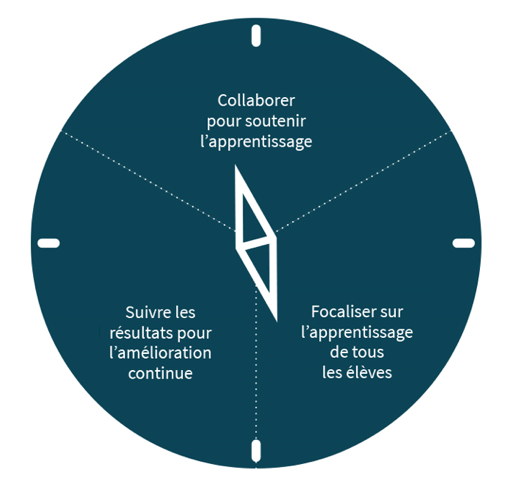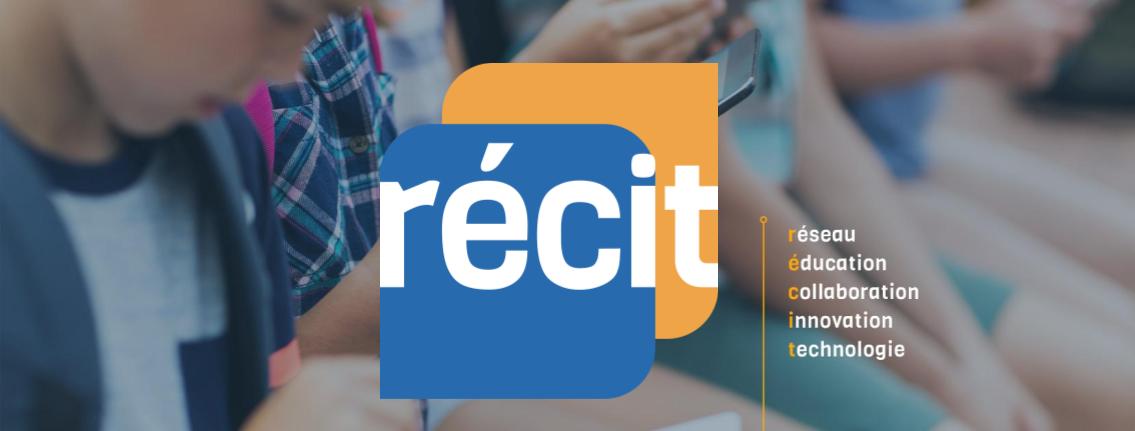Par Alain Poirier, consultant en éducation et accompagnateur CAR, et Amélie Roy, conseillère en transfert et innovation en éducation au Centre de transfert pour la réussite éducative du Québec (CTREQ).
Travailler en communauté d’apprentissage (CAP), ça veut dire collaborer pour soutenir l’apprentissage, focaliser sur l’apprentissage de tous les élèves et suivre les résultats pour l’amélioration continue. Découvrez les fondements du travail en CAP et les témoignages inspirants d’enseignantes et de professionnelles dans la vidéo « Travailler en CAP, ça veut dire quoi ? » réalisée dans le cadre du projet CAR : collaborer, apprendre, réussir.
La CAP désigne le mode de fonctionnement des écoles qui mettent sur pied des équipes collaboratives (ex. : de niveau, de matière, de cycle) composées d’enseignants et de professionnels qui travaillent ensemble de façon systématique pour favoriser l’apprentissage de tous les élèves. Dans une CAP, les membres du personnel scolaire s’engagent dans un processus continu de questionnement collectif qui vise à améliorer les pratiques pédagogiques et la réussite.
La CAP est conçue comme l’organisation dans son ensemble (l’établissement ou le centre de services scolaire) ou la somme des équipes collaboratives qui la compose (1,2).
Travailler en CAP, ça veut dire :
1) collaborer pour soutenir l’apprentissage,
2) focaliser sur l’apprentissage de tous les élèves et
3) suivre les résultats pour l’amélioration continue.

Collaborer pour soutenir l’apprentissage
Collaborer, c’est sortir de l’isolement! Les membres du personnel scolaire qui fonctionnent en CAP travaillent en équipe plutôt qu’en silo. Ils échangent des idées et des stratégies, ils misent sur les forces de chacun et ils ouvrent leurs portes afin de mieux s’entraider. Dans une CAP, les membres du personnel scolaire partagent la responsabilité de la réussite de TOUS les élèves, y compris ceux qui ne font pas partie de leur classe. On les entend dire : Que ferons-nous pour aider NOS élèves à apprendre?
Collaborer, ça s’apprend, ça se construit. Pour arriver à collaborer de façon efficace, les membres du personnel scolaire reconnaissent que la collaboration leur permettra d’atteindre leur but commun. Ils se donnent du temps, ils établissent un climat de confiance et ils questionnent régulièrement leurs pratiques pédagogiques. En travaillant ensemble, les membres du personnel scolaire apprennent les uns des autres, ce qui leur permet de s’améliorer de façon continue et de mettre en œuvre les stratégies les plus efficaces.
Focaliser sur l’apprentissage de tous les élèves
Dans une CAP, les membres du personnel scolaire croient que tous les élèves peuvent réussir si on leur donne suffisamment d’occasions d’apprendre ce qui est essentiel à leur réussite. Ils établissent des cibles communes d’apprentissage qui sont communiquées clairement aux élèves. Ils utilisent les stratégies d’enseignement qui sont les plus efficaces, c’est-à-dire qui sont appuyées à la fois par des données de recherche et des preuves de l’apprentissage recueillies auprès des élèves.
Focaliser sur l’apprentissage implique d’avoir des discussions centrées sur la recherche collective d’une réponse aux questions clés qui suivent : Que voulons-nous que nos élèves apprennent? Comment saurons-nous s’ils ont appris? Que ferons-nous pour les aider à apprendre?
Suivre les résultats pour l’amélioration continue
Dans une CAP, les membres du personnel scolaire recueillent de façon continue des preuves d’apprentissage ou données d’observation à l’aide d’outils communs (ex. : grille d’observation). Ils compilent les données recueillies, par exemple en constituant un portrait de classe, en vue de pouvoir les analyser collectivement en rencontre collaborative.
Selon les constats réalisés relativement au progrès des élèves, les enseignants et les professionnels se questionnent sur les stratégies d’enseignement les plus efficaces et ils organisent ensemble les prochaines interventions de manière à aider autant les élèves qui ont réalisé les apprentissages ciblés que ceux qui ne les ont pas réalisés.
Dans une CAP, non seulement les membres du personnel scolaire suivent de près le progrès des élèves, mais ils mesurent aussi l’atteinte des objectifs du projet éducatif et l’évolution de leur travail collaboratif afin d’améliorer continuellement leur fonctionnement d’équipe.
Faciliter la transformation culturelle de l’école vers la CAP
L’idée de fonctionner en CAP est séduisante, mais elle implique une transformation culturelle qui est souvent sous-estimée. La culture désigne tout ce qui définit l’équipe-école ou qui unit les individus qui en font partie : le climat, les relations interpersonnelles, le leadership, les pratiques pédagogiques et de gestion, les routines, etc.
Tous ces éléments distinctifs sont appelés à se modifier au fur et à mesure de la transformation vers la CAP, ce pourquoi il est judicieux de « cultiver son jardin » en amont, c’est-à-dire de bien se préparer en initiant des actions visant à évoluer progressivement vers une culture davantage collaborative.
Par exemple, les membres du personnel scolaire doivent réfléchir ensemble pour reconnaître la valeur de la collaboration, se donner une compréhension commune de ce que signifie le travail en CAP et mettre en place les conditions facilitantes. La direction d’école joue un rôle crucial pour susciter cette réflexion collective.
Voici quelques conditions à mettre en place pour faciliter le travail en CAP :
- Établir une mission, une vision et des valeurs communes centrées sur la collaboration et la réussite de tous les élèves.
- Créer un climat de confiance et de bienveillance dans l’école.
- Convenir de priorités liées aux apprentissages et au bien-être des élèves (projet éducatif) à travailler en équipe collaborative.
- Partager le leadership (p. ex. : en mettant sur pied une équipe de leaders pédagogiques qui aident la direction à faciliter le travail collaboratif dans l’école, en reconnaissant et en utilisant l’expertise et les forces de chaque membre de l’équipe, en prenant les décisions pédagogiques collectivement).
- Instaurer une structure formelle de travail collaboratif sur l’enseignement-apprentissage en allouant le temps de rencontre et les ressources nécessaires.
- Passer à l’action! Se poser les questions suivantes pour mieux avancer : Où en sommes-nous? Quels sont nos forces et nos défis? Que voulons-nous réaliser en priorité? Que ferons-nous pour y arriver? De qui/quoi aurons-nous besoin?
Visionnez la vidéo « Travailler en CAP, ça veut dire quoi ? » et consultez la Fiche de visionnement de la vidéo sur le site Web CAR pour animer une réflexion collective avec les membres de votre équipe-école.
Références
- Dufour, R., Dufour, R., Eaker, R., Many, T. W. et Mattos, M. (2016). Learning by doing (3e éd.). Solution Tree.
- Leclerc, M. (2012). Communauté d’apprentissage professionnelle : Guide à l’intention des leaders scolaires. Presses de l’Université du Québec.






